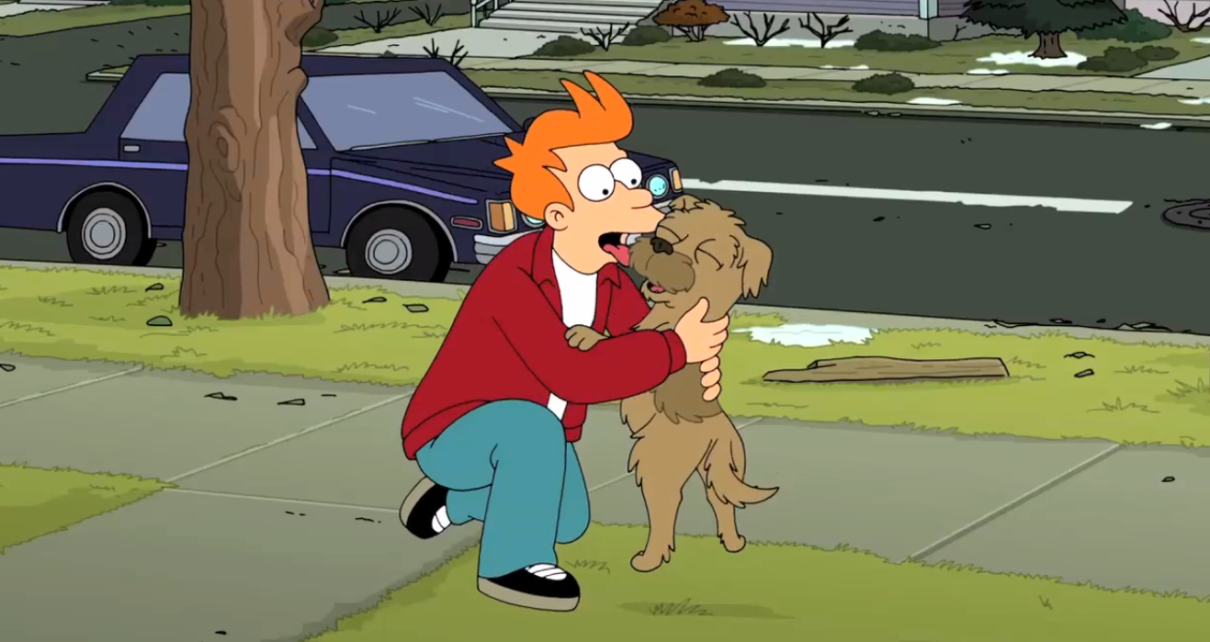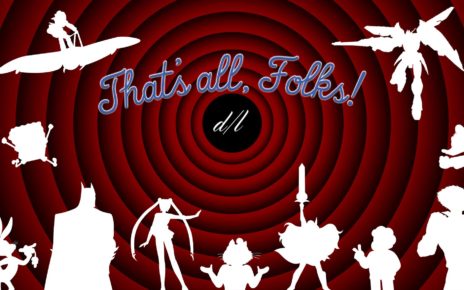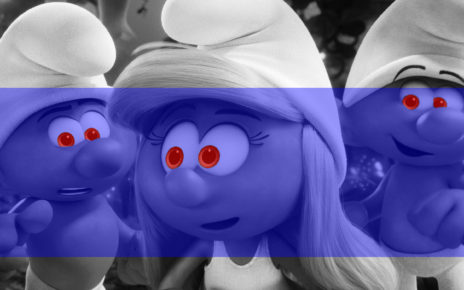[Cracks knuckles, spine, ankles, toes, and neck.]
OK, let’s do it. Let’s talk about Futurama.
It’s a sorry fact I acknowledged ruefully as we put together That’s All, Folks!, the Dot and Line’s farewell series: we’ve barely covered Matt Groening’s madcap futuristic psychodrama that happens to star a hard-drinking robot, aliens, a time-flung buffoon of a leading man, his elderly mad scientist descendant, and tons of other delightful and riveting characters. (Nibbler alone—my GOD, give me a show about Nibbler!)
Futurama was “Rick and Morty, But Ensemble, Accessible, and in Possession of a Soul,” and it was notoriously hard to kill, returning in various movies with new slings and arrows volleyed at the executives who canceled it. The show deserved a lot more attention from we humble editors of the Dot and Line, but I’m not sweating it too hard, because we gather here today to discuss its finest few minutes: the end of “Jurassic Bark,” the seventh episode of the show’s fourth season, known colloquially to fans as “The One That Brutally Damns Fry’s Dog to a Sad and Lonely Death by Starvation.”

Oh, you thought this was going to be a happy blog about Futurama? N-n-n-no. No, no, no, no. No, no. No! We’re here to discuss Seymour Asses, Fry’s very good dog. Intern! Run the tape.
What you see above is the manifestation of two universes. One is Fry’s imagined version of Seymour Asses’ existence upon his owner’s disappearance into the future, dreamed up after an episode’s worth of attempts to clone his dead and fossilized dog from whatever carbon-based goop was still locked inside the remains. The other is the brutal, cold reality defining life: that we die and, when we die, we die alone, no matter what relationships or familial bonds we have forged. Hachikō would be proud.
The clip is easily one of the great comedic stingers of all time. It’s darkly funny and cemented Seymour’s status as one of the greatest dogs ever animated. The clip never shows him die, and it doesn’t need to. The final shot and cut-away give us all the information we need: Seymour rests his head, his eyes shut, his brows sag ever so slightly, and the credits roll. (Seymour finds a happier fate in the later episodes that make up the Bender’s Big Score movie, but I’m not talking about that here.)
“You lived before you met me?” Bender asks Fry earlier in the episode. It’s a throwaway line the robot growls that reflects his own attachment complex to Fry, but it also touches on the crux of Seymour’s life and eventual death—one that is rife with philosophical underscoring, which the episode’s writer, Eric Kaplan, undoubtedly understands. Kaplan went to Harvard for philosophy and, in 2017, published a dissertation on the existentialist philosopher Søren Kierkegaard’s take on humor.
In that dissertation, Kaplan broadly makes the case—and I say “broadly” here because intellectual honesty compels me to admit that I have not read all 121 pages of this dissertation for the sake of one blog post, but I am planning to, I swear—that Kierkegaard’s humor and existential philosophy are inextricably linked. “Kierkegaard’s account of joking and his account of his own philosophical project are used to mutually illuminate each other,” Kaplan writes. The same could be said of Kaplan’s own credited work on Futurama, where the story of Seymour Asses enshrines the tragic persistence of a steadfast partner but also illuminates a truth we could all stand to learn: you should not invest your whole life into just one thing.
“You lived before you met me?” Let’s all do our best.

Thanks for reading The Dot and Line, where we’ve written about animation of all kinds for more than four years. We’ll miss you! If you’ll miss us too, show us some love on Twitter and show our writers the money on GoFundMe. Read our goodbyes here: That’s All, Folks!





